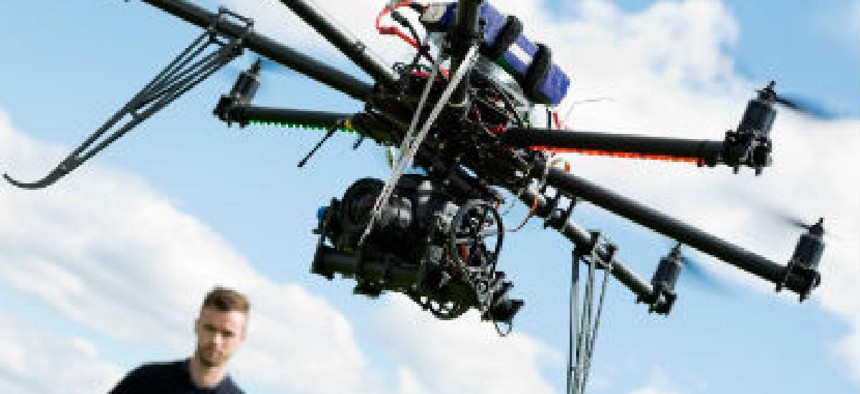DARPA wants to make drone radio controls more secure

New technology could safeguard drone communications by submerging radio control signals into everyday background noise.

Defense Department researchers are trying to keep radio interference from hampering rapidly developing radio technology for unmanned aerial systems.
The Defense Advanced Research Projects Agency is working on wireless communications technology that would better protect the radio signals that control drones to stop miscommunication and intentional jamming.
The work comes at a time when widespread use of unmanned aerial vehicles is rapidly unfolding.
The Federal Aviation Administration's new rules for non-recreational use of small commercial and research drones went into effect on Aug. 29. The agency has been moving quickly in the past year to accommodate private and commercial unmanned aerial systems, whose popularity has exploded.
The FAA's rules are designed to minimize risks to other aircraft and people and property on the ground.
In an Aug. 30 statement, Josh Conway, a program manager in DARPA's Microsystems Technology Office, said a secure wireless communications platform is "part and parcel of all kinds of platforms and devices" that will be used in the coming years. The goal is to meet the need for more secure command and control, but data transfer will also benefit, he added.
DARPA said its Hyper-wideband Enabled RF Messaging program could be the foundation of secure communications. In an article published in IEEE's Journal of Lightwave Technology, the researchers describe how "optical combs" residing on hair-thin glass fibers in drones' radio receivers could provide high-speed signal processing similar to what a supercomputer could do.
That approach could tease out direct-sequence spread spectrum signals, which can carry a coding protocol that increases resistance to jamming and defends against interception. Those signals can also be hard for jammers to find because they fade into the "sea of always present radio noise," DARPA researchers said.
NEXT STORY: DISA continues internal consolidation


